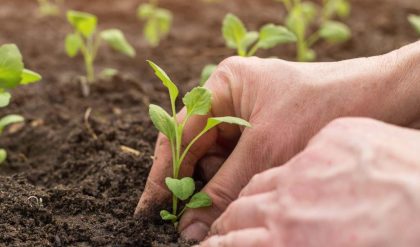Any tillage operations performed after the primary tillage are called secondary tillage. Generally, several secondary tillage operations are performed before the field is ready for planting. The main objective of secondary tillage is to break down large clods and to prepare an ideal seedbed for planting. An ideal seedbed is the one that allows for good seed-to-soil contact, conserves moisture needed for germination, and allows for vigorous and uninhibited root and shoot growth. The equipment used for secondary tillage are generally called harrows. The most common harrow is the disk harrow; spring tine harrows, spike tooth harrows, cultivators, and rotary hoes are other types. In dry climates, culti-packers are often used for the final tillage operation before planting. The purpose of a culti-packer is to increase the density of the top few centimeters of the soil depth. This tends to break the capillaries in this soil zone and prevent moisture from escaping.
Home
General Concepts
Secondary tillage in conventional tillage systems



